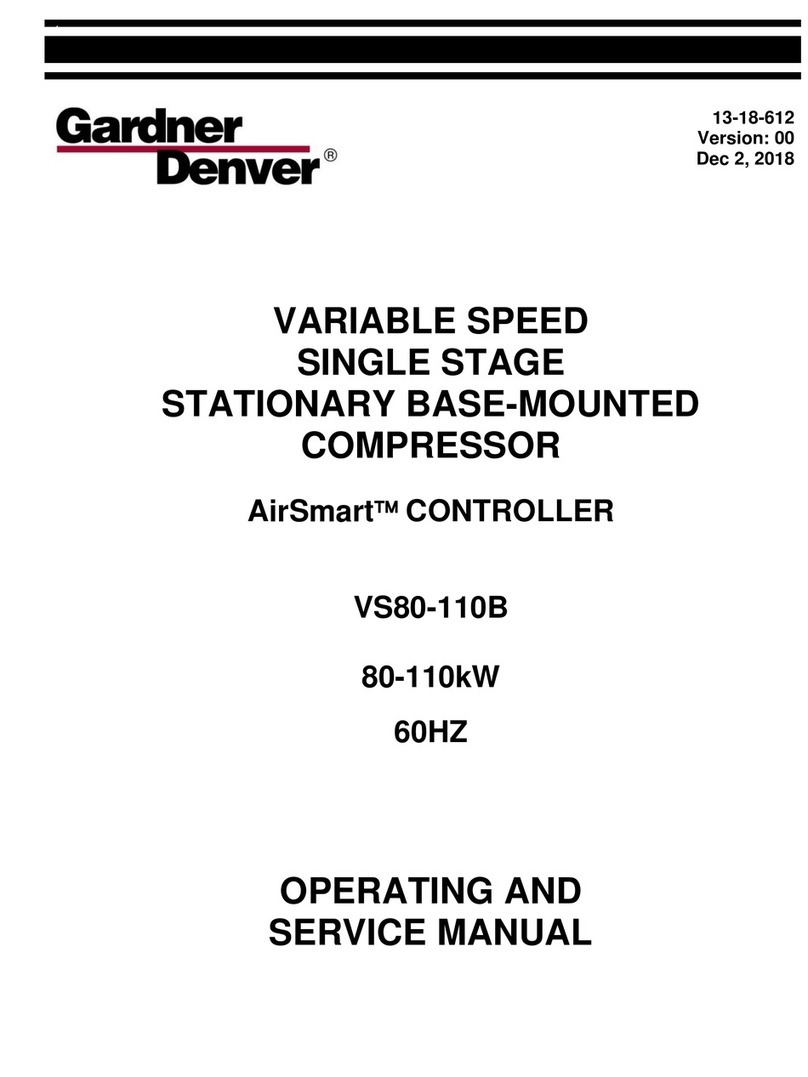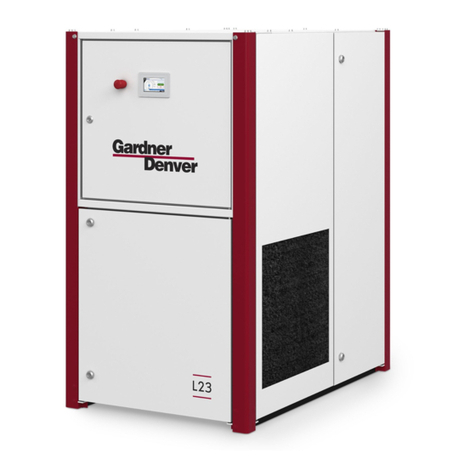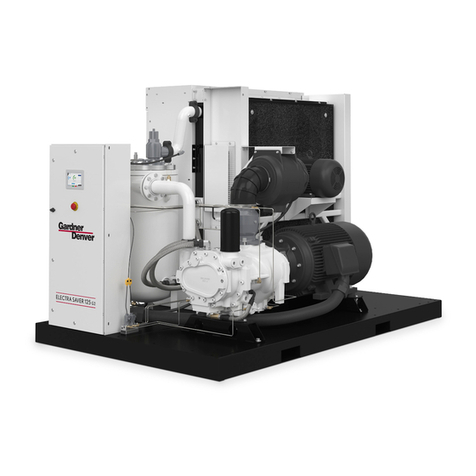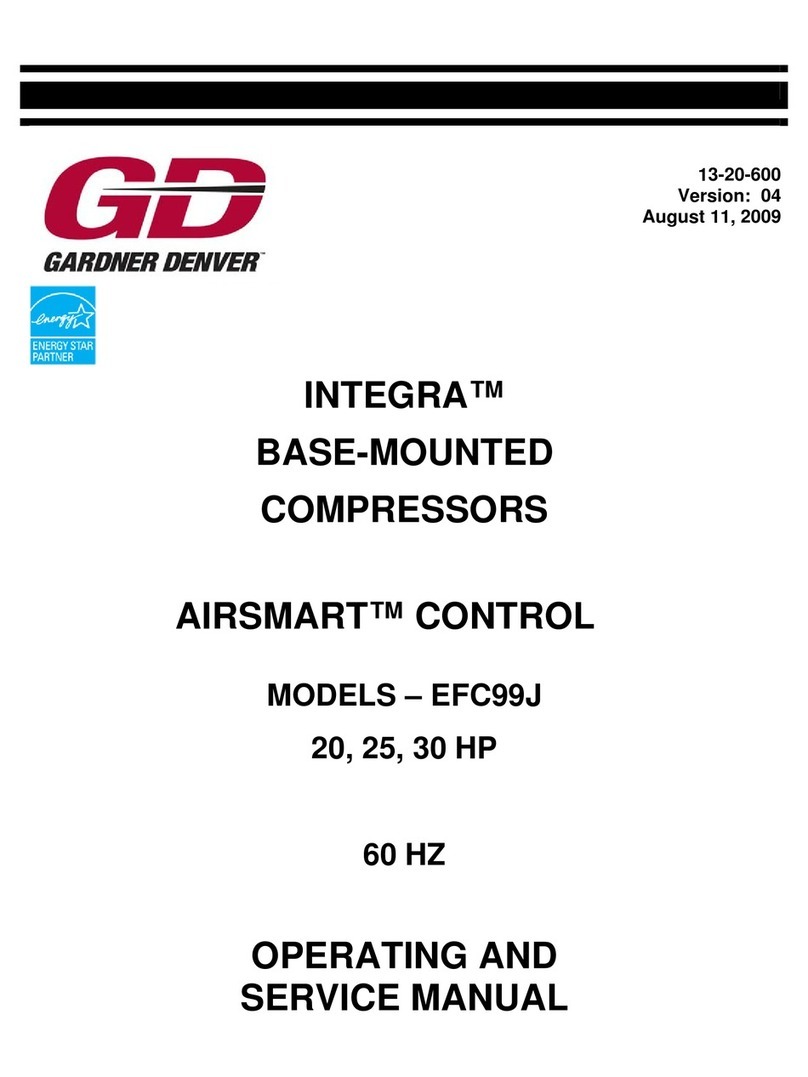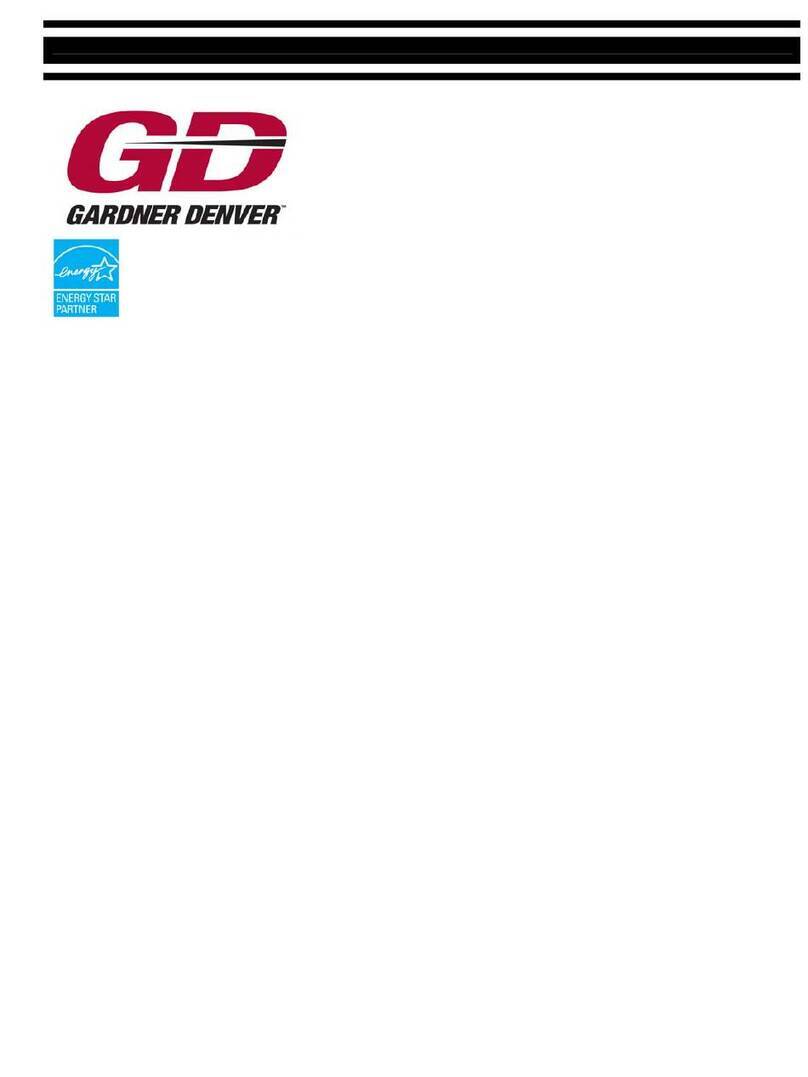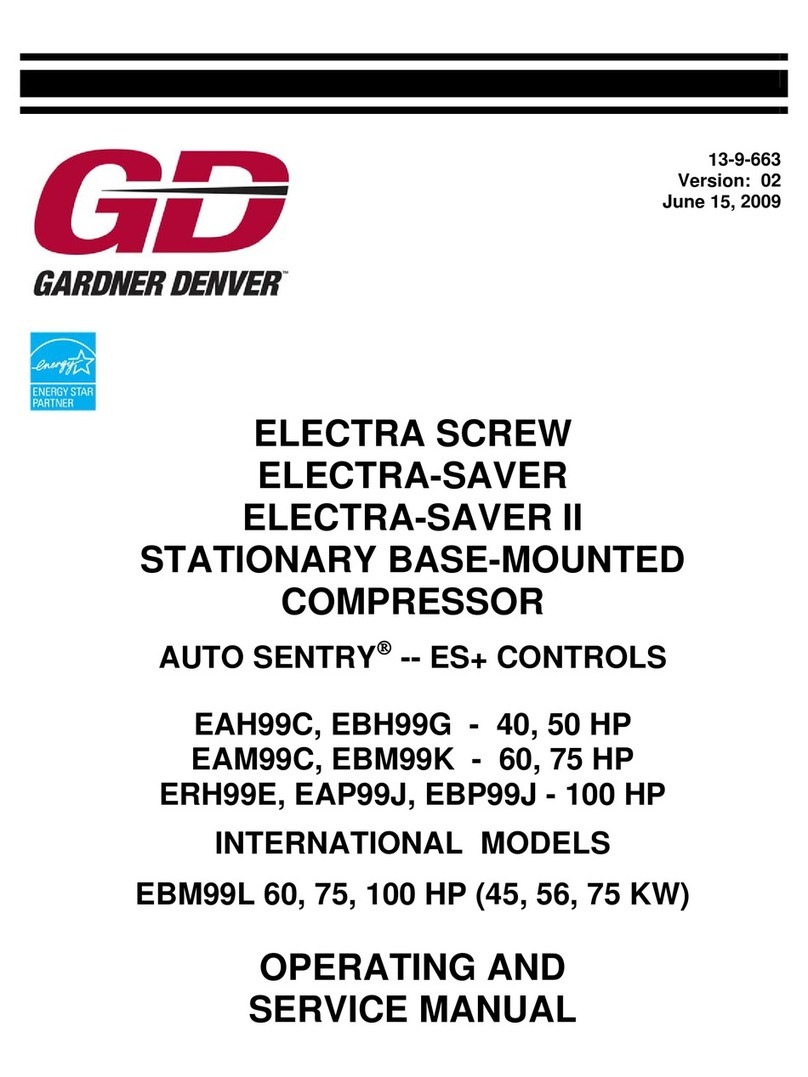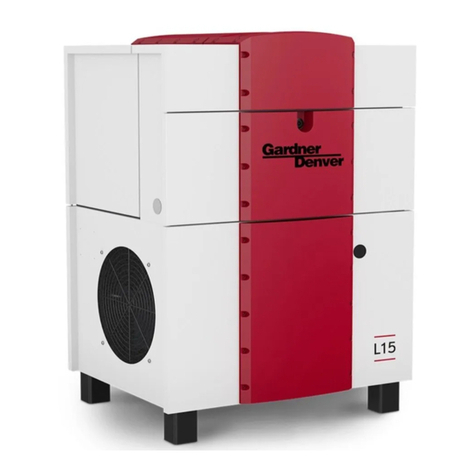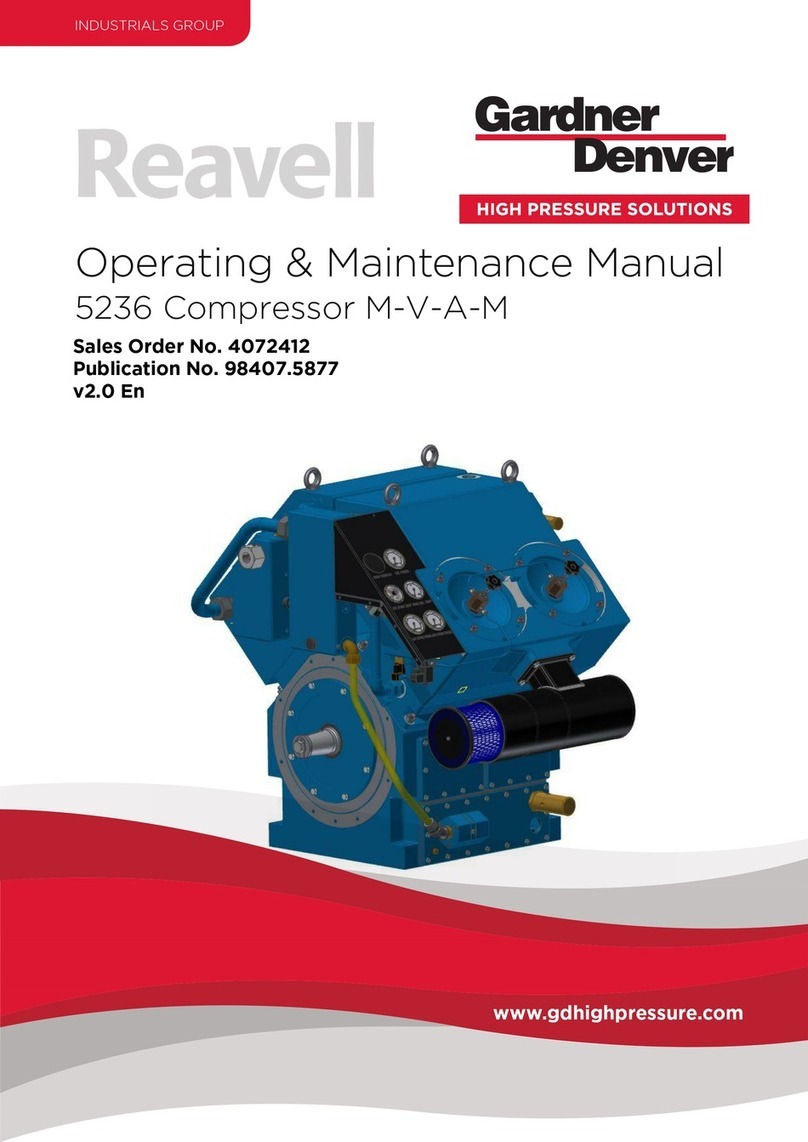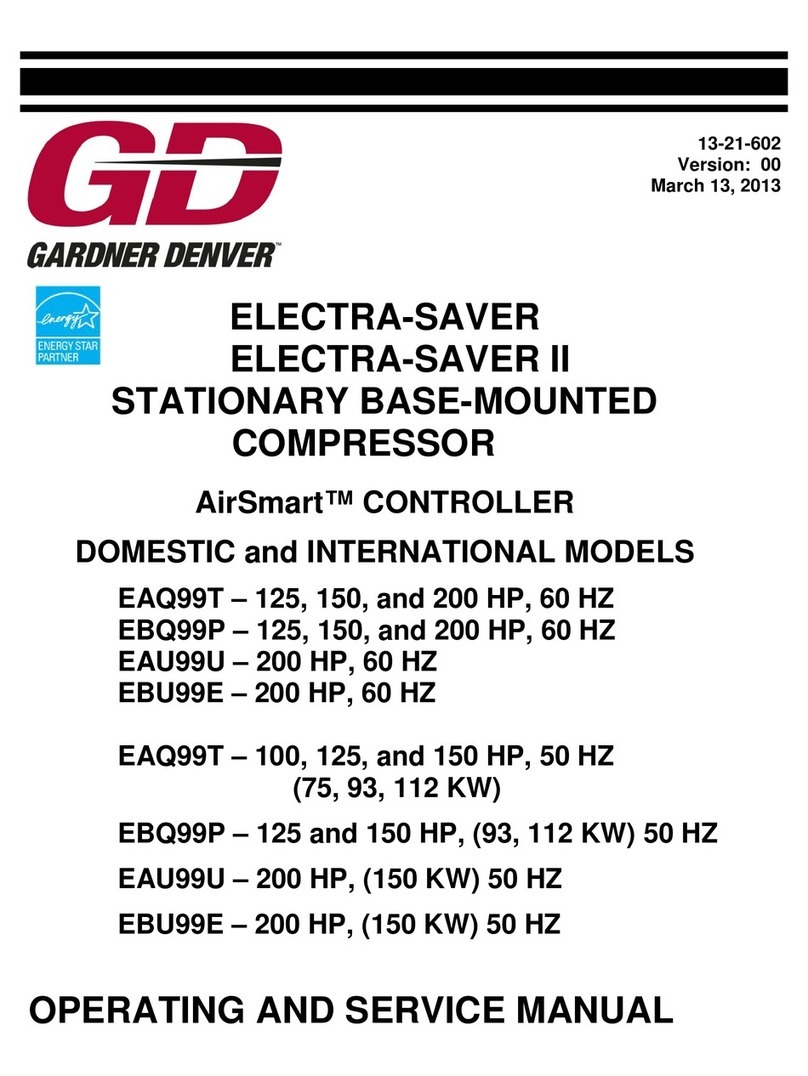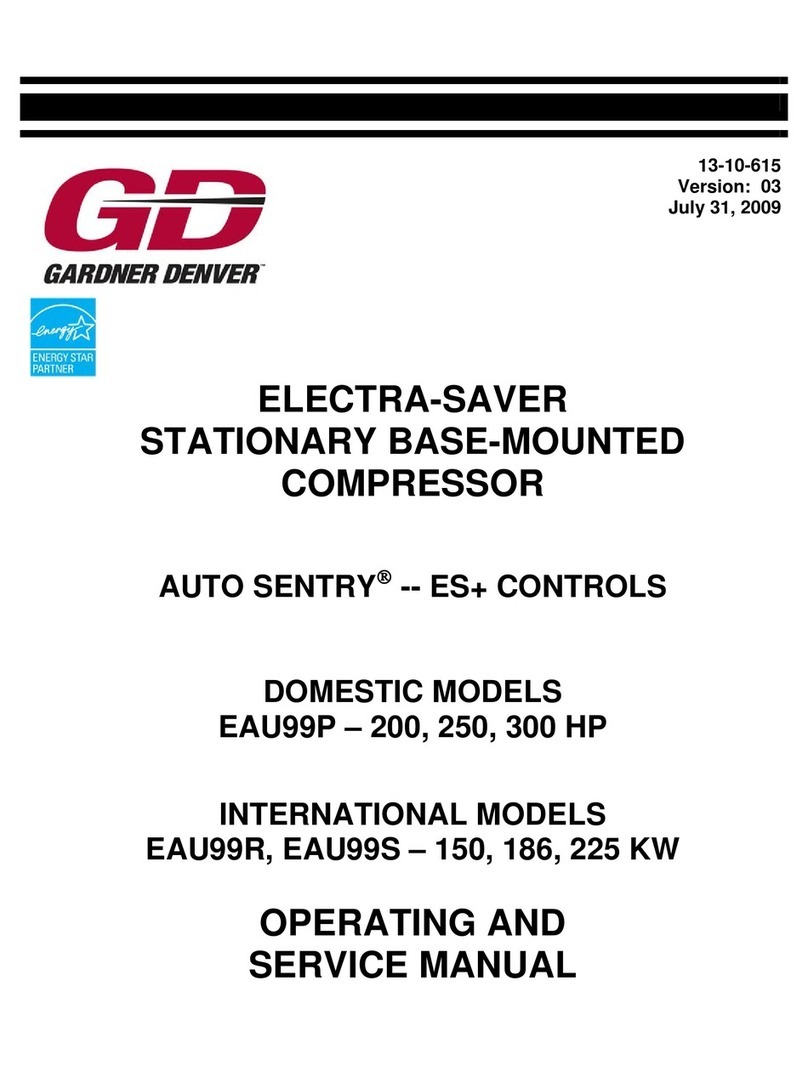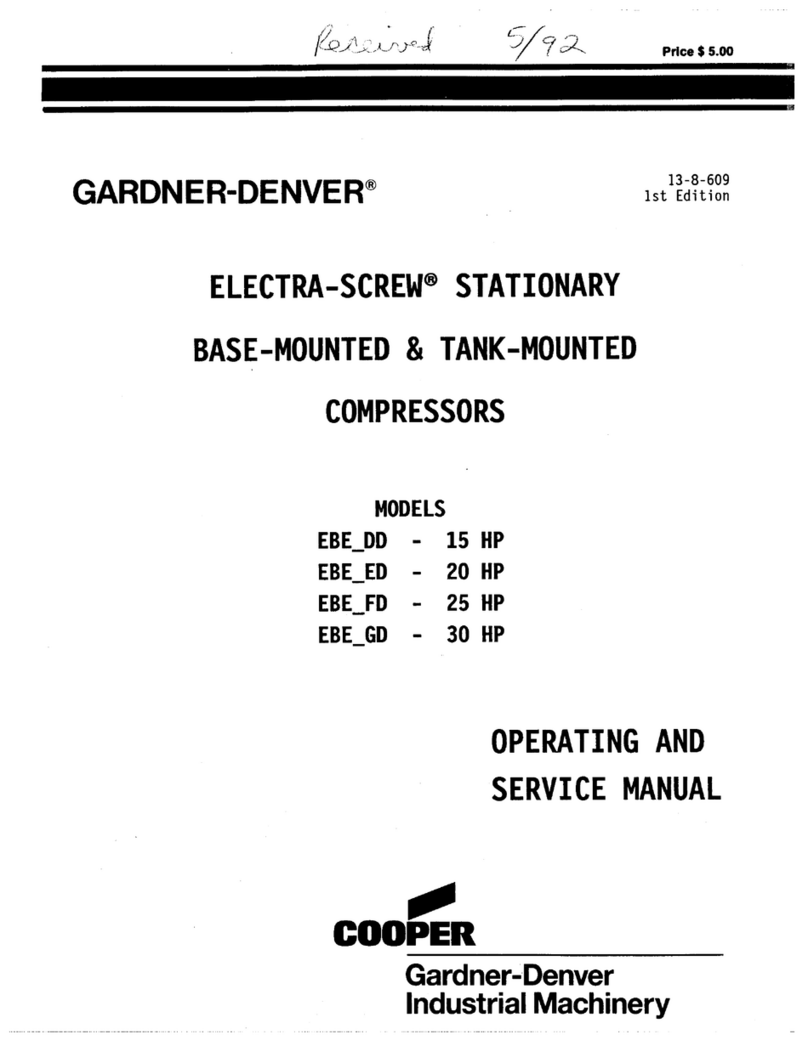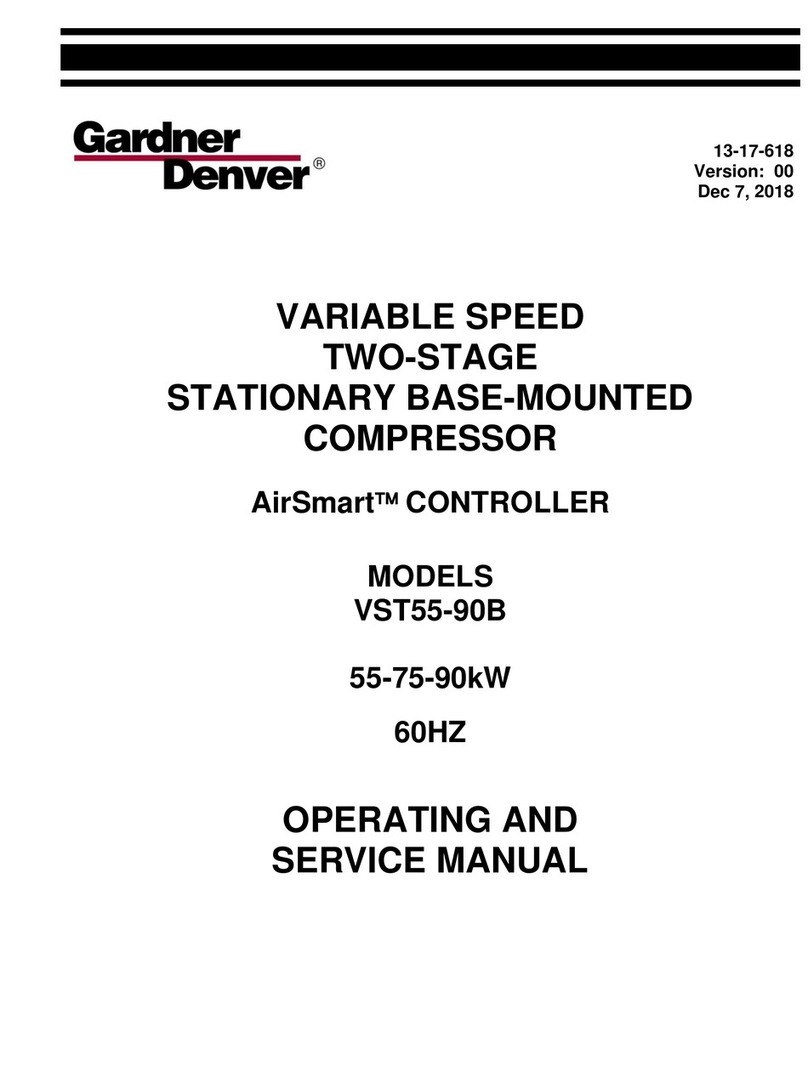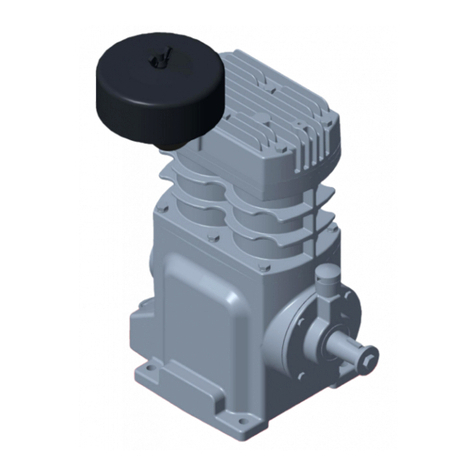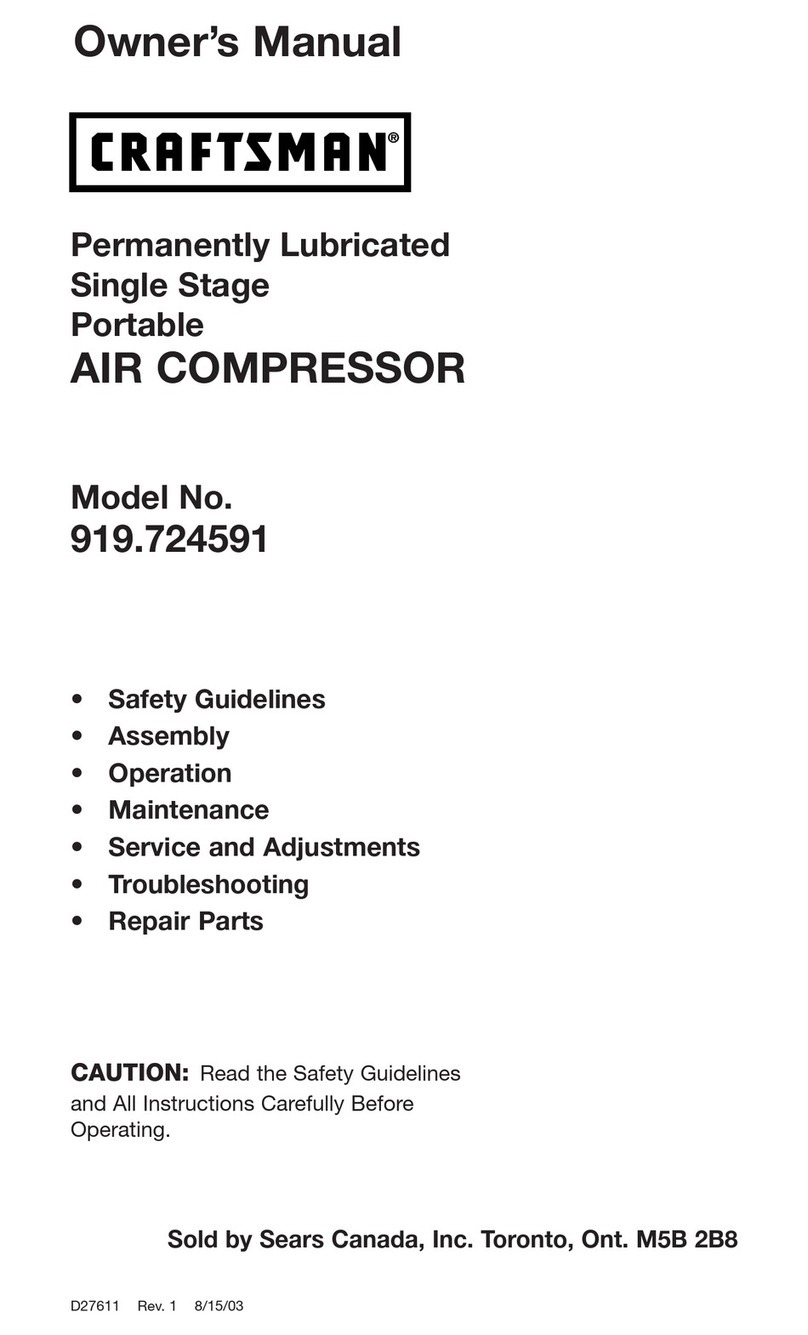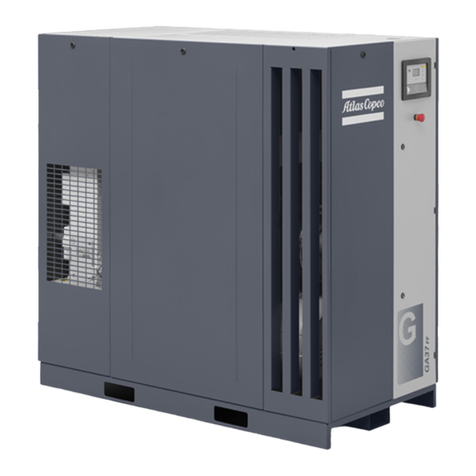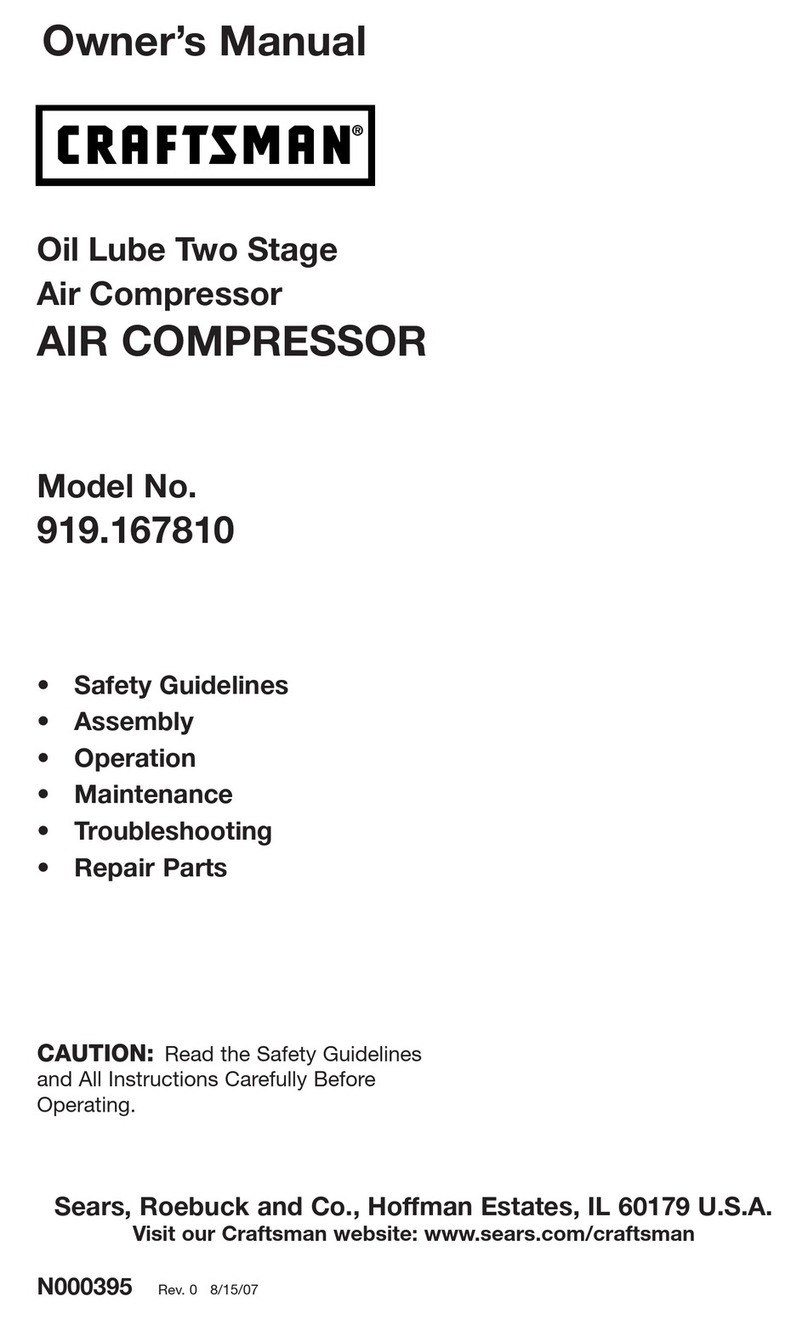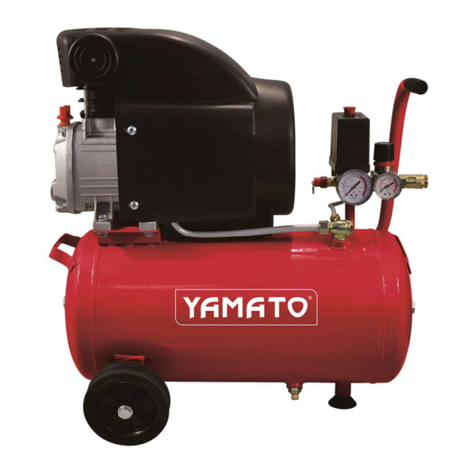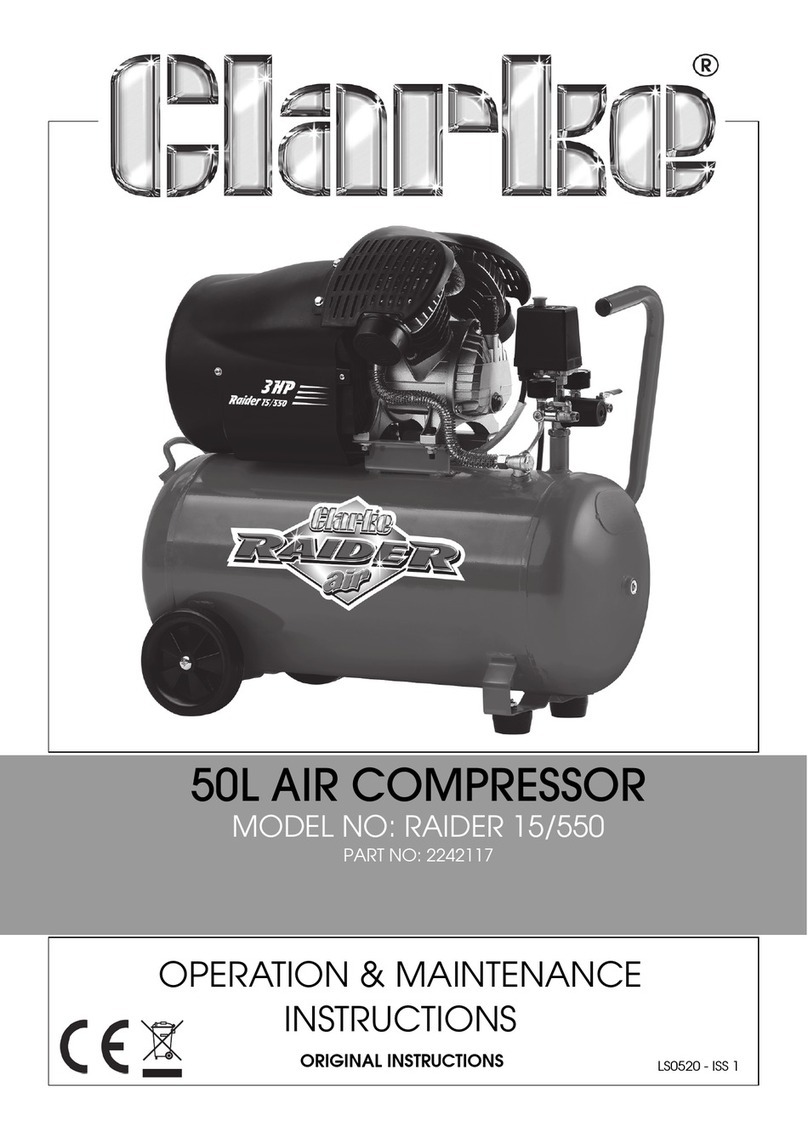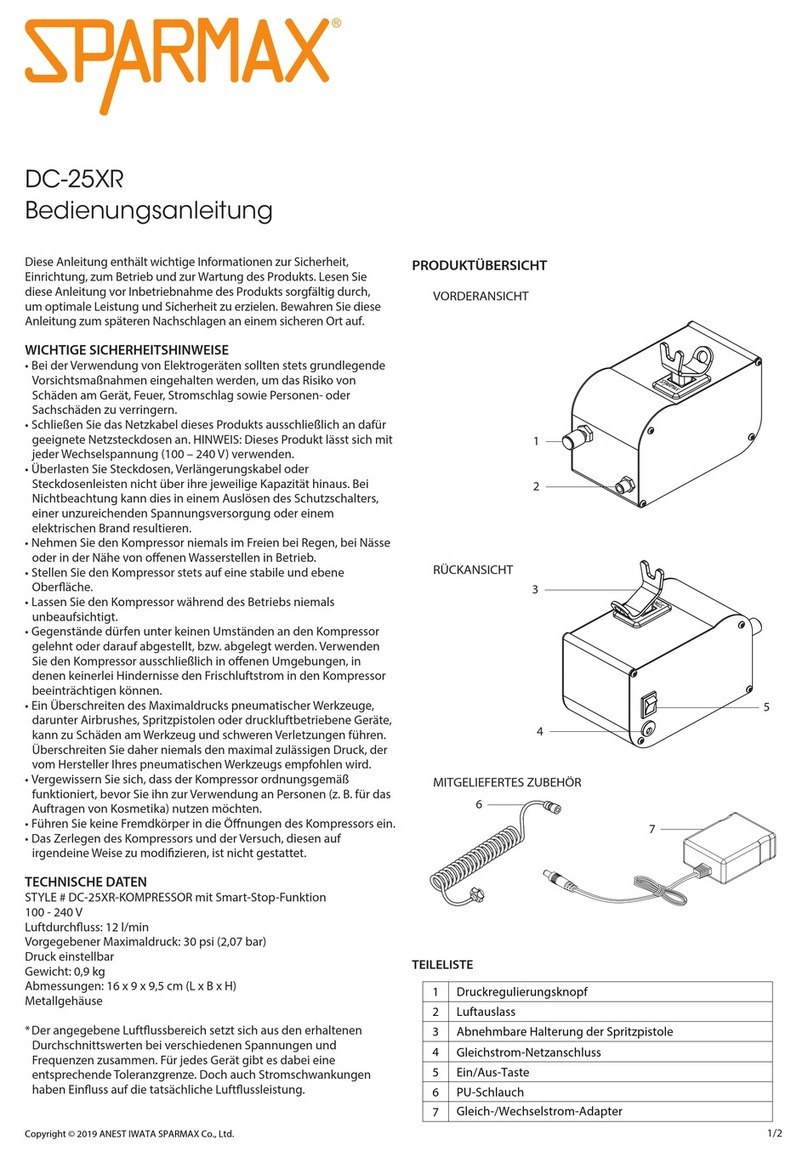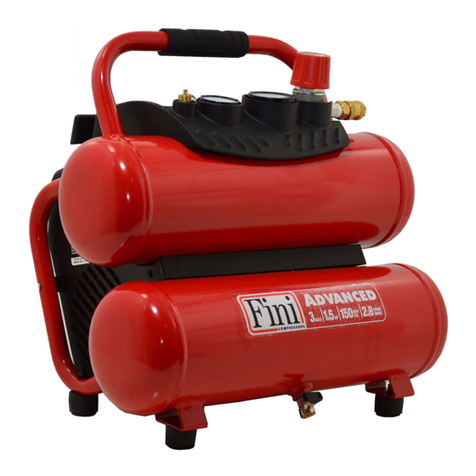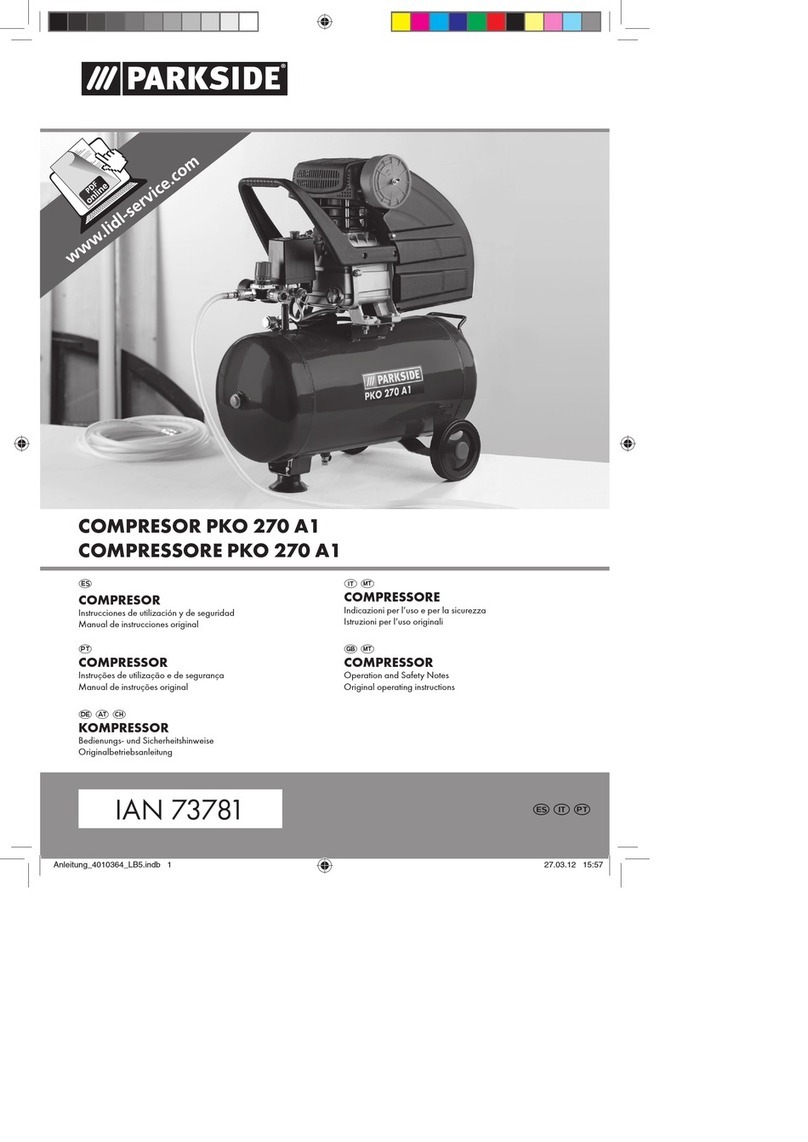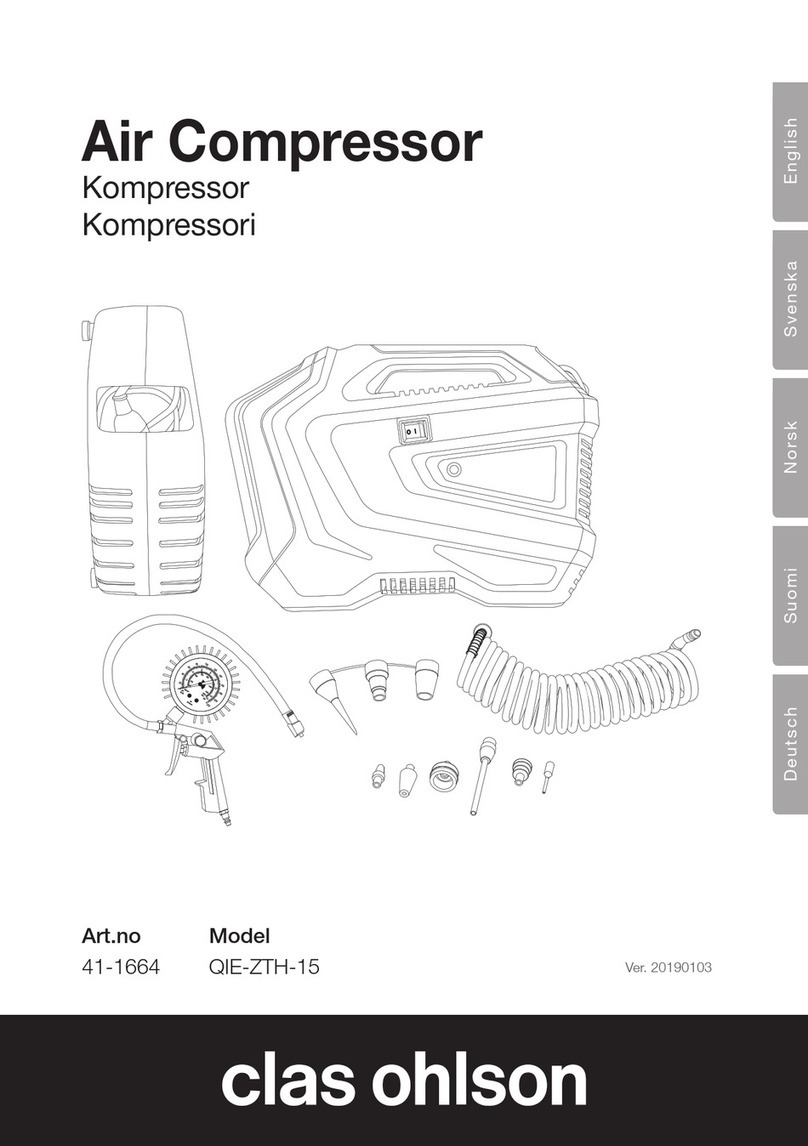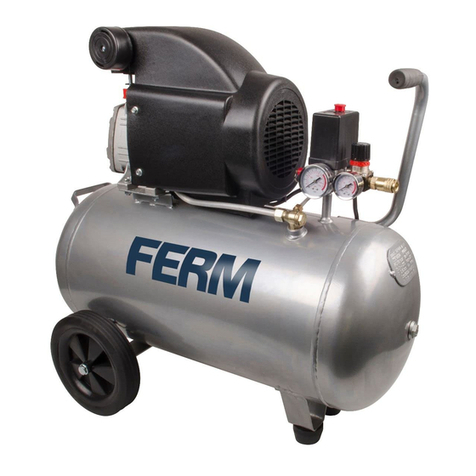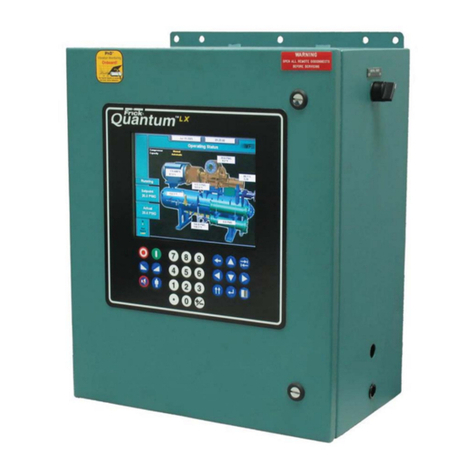
Light Test, Operating . . . . . . . . . . . . . . . . . . . . . ..7–1
Location (Installation )........ ...............6–1
Lubricants, Compressor ......................3–2
Lubrication, Cooling &Sealing. ................. 1–1
LUBRICATION –OIL COOLER, OIL FILTER
&SEPARATOR (SECTION ).............. 3–1
Maintenance of Air Filters ..........,..... 4-1, 4–2
MAINTENANCE SCHEDULE (SECTION 8) . . . . . . . . 8–1
Minimum Discharge Pressure Valve ............... 2–2
Minimum Operating Pressure (Automatic Start-Stop). .... 2–6
Minimum Operating Pressure (Constant Speed) . . . . . . . . 2–3
Minimum Operating Pressure (Dual) ..,........... 2–8
Minimum Operating Pressure (Duomatic) . . . . . . . . . . . . 2–9
Mixing Valve, Thermostatic (Radiator-Type Oil Cooler) . . . 3–3
Mode, Operating . . . . . . . . . . . . . . . . . . . . . . . . ..7–1
Motor Protection Devices ..................... 2–1
Oil& Air Discharge Temperature ................ 3–6
Oil-Air Systems Flow Diagram. .................3–1
Oil Capacities ............................3–2
Oil Change Interval .........................3–2
Oil, Compressor ...........................7–1
Oil Cooler, Compressor –Radiator Type ........... 3–3
Oil Cooler, Compressor –Water-Cooled Heat Exchanger . . 3–3
Oil Cooler Oil Pressure Drop... ................3–6
Oil Filter -Compressor ......................3–3
Oil Flow Control Valve (Duomatic Only) ........... 3–’5
Oil Inlet Pressure ..........................3–6
Oil Inlet Temperature, Compressor ............... 3–6
Oil Level Gauge ...........................3–2
Oil Pressure Drop, Oil Cooler... ...............3–6
Oil Quality ..............................3–2
Oil Reservoir -Air Receiver ...................3–4
Oil Reservoir Check Valve... .................2–2
Oil Reservoir Drain .........................6–1
Oil Reservoir -Filling ......................3–3
oil Reservoir Pressure Shutdown, High ............. 2–1
Oil Return ..............................3–5
Oil Separator, Compressor ....................3–4
Oil Specifications .........................3–1
Oil System ..............................3–1
Oil System Check, Compressor. ................. 3–6
Oil System-Draining&Cleaning ...............3–2
Oil Temperature Gauge . . . . . . . . . . . . . . . . . . . . ..2–2
On-Off Switches ..........................2–1
Operating Air Pressure Adjustment (Automatic Start-Stop) .2–6
Operating Air Pressure Adjustment (Dual) ........... 2–6
Operating Air Pressure Adjustment (Duomatic) . . . . . . . . 2–9
Operating Light Test ........................7–1
Operating Mode ...........................7–1
Operating Pressure, Minimum (Auto Start-Stop). .,..... 2–6
Operating Pressure, Minimum (Constant Speed) . . . . . . . . 2–3
Operating Pressure, Minimum (Dual) .............. 2–8
Operating Pressure, Minimum (Duomatic) . . . . . . . . . . . 2–9
OPERATING PROCEDURES &STARTING (SECTION 7) 7–1
Outline, Compressor . . . . . . . . . . . . . . . . . . . . . . ..1–4
OVERHAUL –COMPRESSOR (SECTION 10) ., . . . . . 10-1
Pilot, Subtractive ..........................2–2
Piping.................. ...............7–1
Piping, Blowdown Valve ......................6–2
Piping, Control ...........................6–1
Piping, Water (Water-Cooled Units) ............... 6–2
Pressure Adjustment, Air Receiver Section (Constant Speed) 2–3
Pressure Adjustment, Operating Air (Automatic Start-Stop) 2–6
Pressure Adjustment, Operating Air (Dual). . . . . . . . . . . 2–6
Pressure Adjustment, Operating Air (Duomatic). . . . . . . . 2–9
Pressure Differential Group... ................. 3–5
Pressure Drop, Oil Cooler Oil ..................3–6
Pressure Gauge, Air . . . . . . . . . . . . . . . . . . . . . . . ..2–2
Pressure, Minimum Operating (Automatic Start-Stop) . . . . 2–6
Pressure, Minimum Operating (Constant Speed) ........ 2–3
Pressure, Minimum Operating (Dual) ....,......... 2–8
Pressure, Minimum Operating (Duomatic) . . . . . . . . . . . 2–9
Pressure, Oil Inlet .........................3–6
Pressure Shutdown, High Oil Reservoir . . . . . . . . . . . . . 2–1
Pressure, System ..........................7–1
Pressure Valve, Minimum Discharge ............... 2–2
Radiator Type Oil Cooler .....................3–3
Rebuilding Data . . . . . . . . . . . . . . . . . . . . . . . . ..10–9
Receiver, Auxiliary Air.... ..................6–1
Reservoir Drain, Oil ........................6–1
Reservoir (Oil) Check Valve... ................2–2
Rotation ...............................7–1
Running Clearances .........................10–9
Safety Devices ............................2–1
Safety Valve .............................2–2
Screw Torque Tightening Recommendations. .........10–3
Sectional View of Compressor . . . . . . . . . . . . . . . . . . 10–3
Separator, Compressor Oil...... . . . . . . . . . . . . . . . 3–4
Service Check list .........................8–1
Service Liue, Discharge.......................6–2
Shutdown Switch, High Air Temperature ........... 2–1
Shutdown Switch, High Oil Reservoir Pressure ........ 2–1
Shutoff Valve, Water (Water-Cooled Heat Exchanger) .... 3–4
Specifications, Oil ..........................3–1
STARTING &OPERATING PROCEDURES (SECTION 7) 7–1
Starting unit -cold ........................7–1
Starting Unit -Hot ........................7–1
Stopping Unit ............................7–1
Subtractive Pilot ..........................2–2
Switch, High Air Temperature Shutdown ........... 2–1
Switch, High Oil Reservoir Pressure Shutdown . . . . . . . . 2–1
Switches, ’’On-Off’’ ........................2–1
System Pressure ...........................7–1
Temperature, Air& Oil Discharge . . . . . . . . . . . . . . . . 3–6
Temperature, Compressor Oil Inlet ............... 3–6
Temperature Gauge, Oil ......................2–2
Temperature Shutdown Switch, High Air . . . . . . . . . . . 2–1
Thermostatic Mixing Valve (Radiator Type oil Cooler) ... 3–3
Timed Automatic Start-Stop (Duomatic) . . . . . . . . . . . . 2–8
Torque Tightening Recommendations ..............10–3
TROUBLE SHOOTING (SECTION 9). ............ 9–1
Valve, Automatic Blowdown. ..................2–2
VaIve, Check (Oil Reservoir) ...................2–2
Valve, Inlet (Constant Speed) .................. 2–3
Valve, Inlet (Duomatic Control) .......,......... 2–8
Valve, Minimum Discharge Pressure ............... 2–2
Valve, Oil Flow Control (Duomatic Only) . . . . . . . . . . . 3–5
Va.lve Piping, Blowdown ......................6–2
Valve, Safety ............................2–2
Valve, Thermostatic Mixing (Radiator-Type Oil Cooler) . . . 3–3
Valve, Water Flow Control (Heat Exchanger) . . . . . . . . . 3–4
Valve, Water Shutoff (Water-Cooled Heat Exchanger) . . . . 3–4
Voltage, Control ..........................2–1
Water Flow .............................6–4
Water Flow Control Valve (Heat Exchanger) ......... 3–4
Water Piping (Water-Cooled Units). ......,........ 6–2
Water Shutoff Valve (Water-Cooled Heat Exchanger). . . . . 3–4
Wiring Diagram (Automatic Start-Stop) ............. 2–5
Wiring Diagram (Constant Speed) . . . . . . . . . . . . . , . . 2–4
Wiring Diagram (Dual Control) .................. 2–7
Wiring Diagram (Duomatic Control). . . . . . . . . . . . . . . 2–10
Wiring, Electrical ......................6–3.7–1
13-9-601 Page iii
